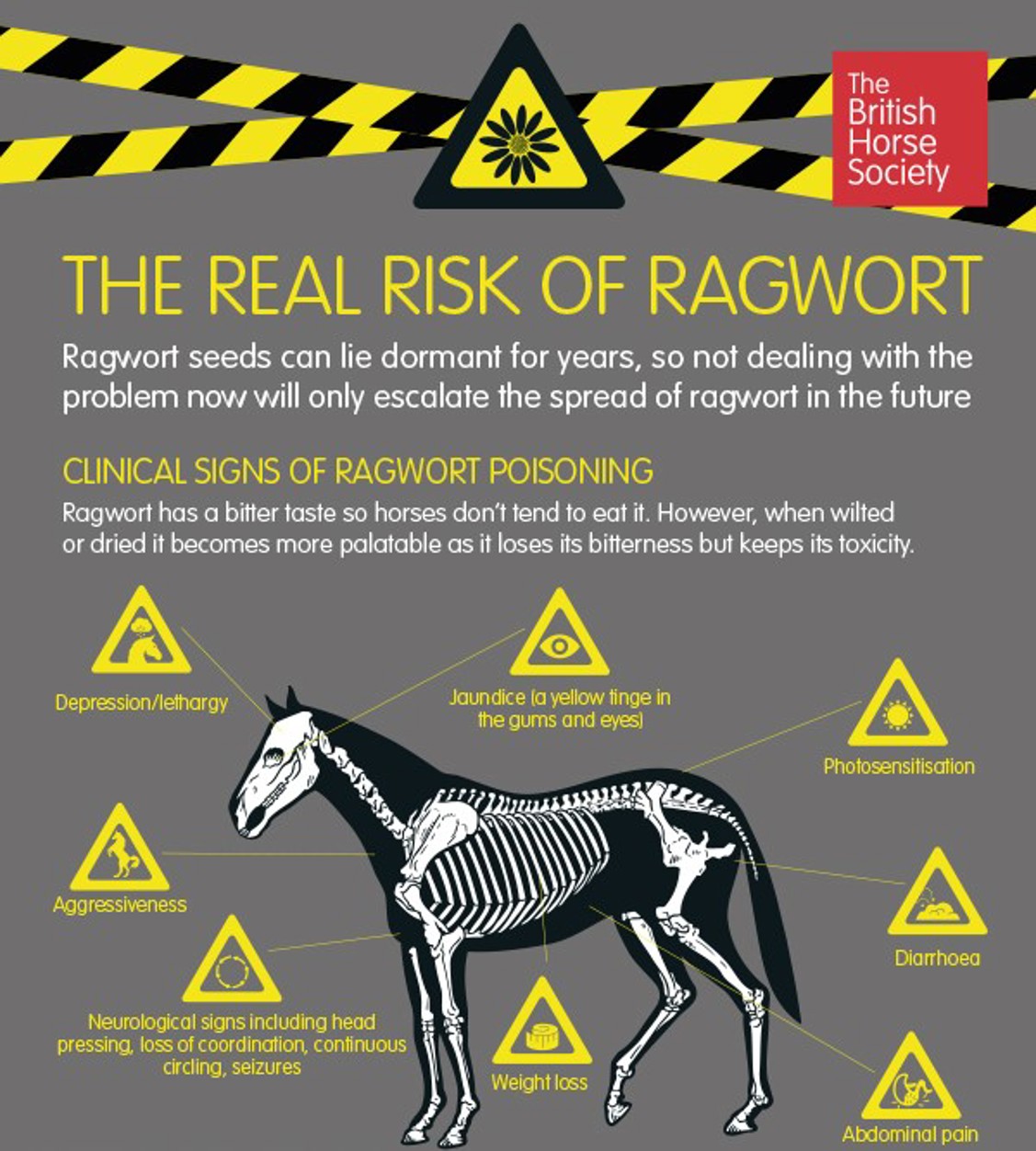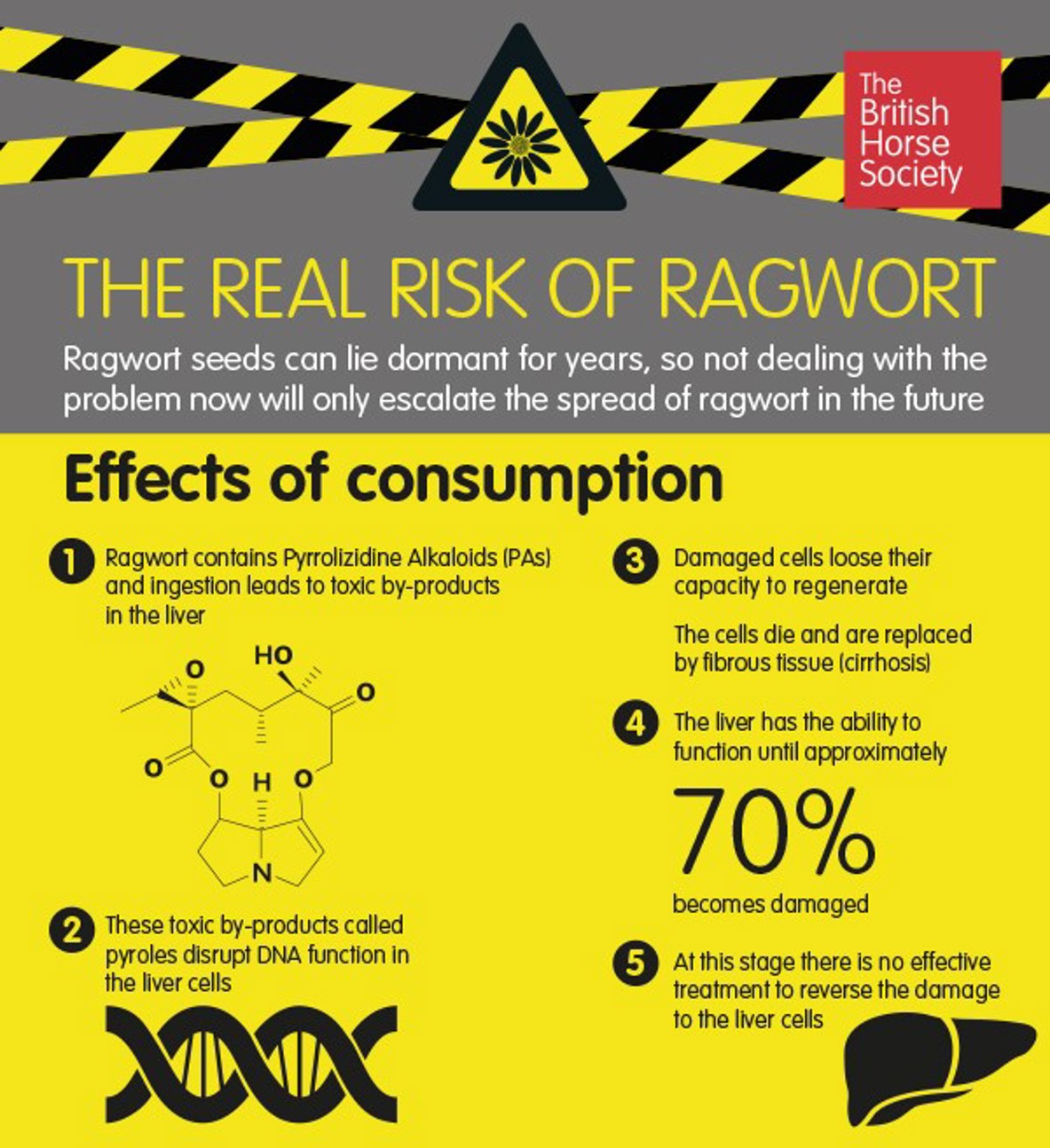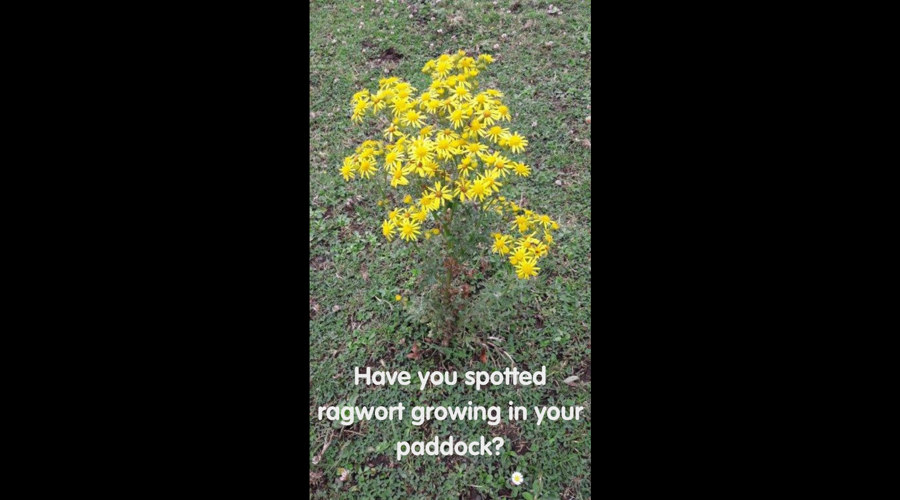Ragwort is a common weed that grows on wasteland, road verges and railway embankments with distinctive bushy yellow flowers and rosette leaves.
Due to its bitter taste, most horses won’t immediately choose to eat ragwort if it's growing among their grazing – but this isn’t a guarantee. Horses will eat ragwort if nothing else is available, accidentally or where parts of the plant have wilted and become palatable. Ragwort loses its bitter taste if it’s cut, dried and found in forage, for example, hay, but it doesn’t lose any of its toxicity and still remains a danger. Therefore, it's advised to remove all elements of ragwort from land used to graze horses or forage production, including when it's dead and dried.
Signs of ragwort poisoning

What happens when ragwort is ingested?


![HPIM1556[6237]](/media/tgfez2bf/hpim1556-6237.jpg?width=480&height=480&v=1d899f98d7ac790)
![HPIM1556[6237]](/media/tgfez2bf/hpim1556-6237.jpg?width=1800&height=800&v=1d899f98d7ac790)


